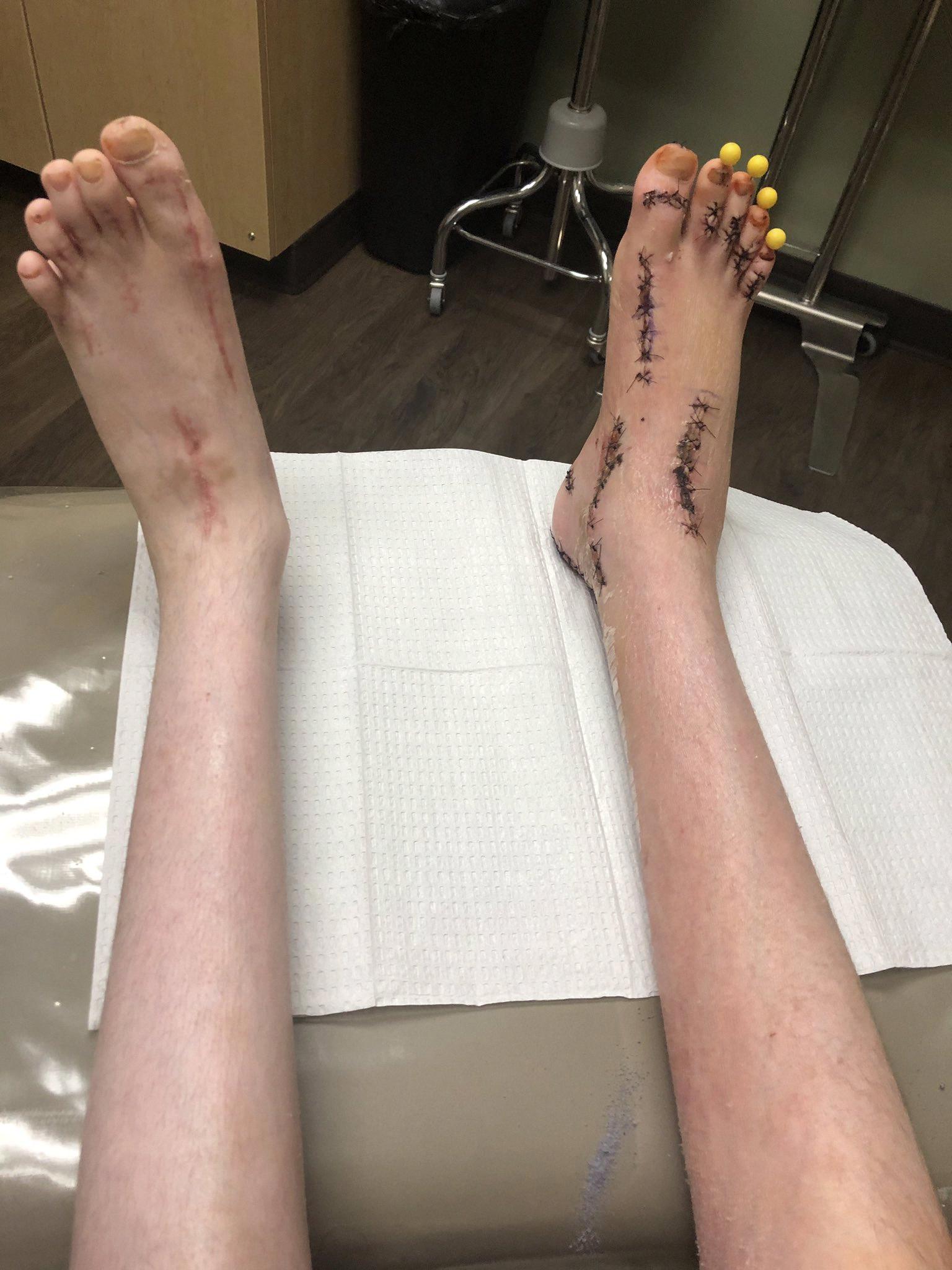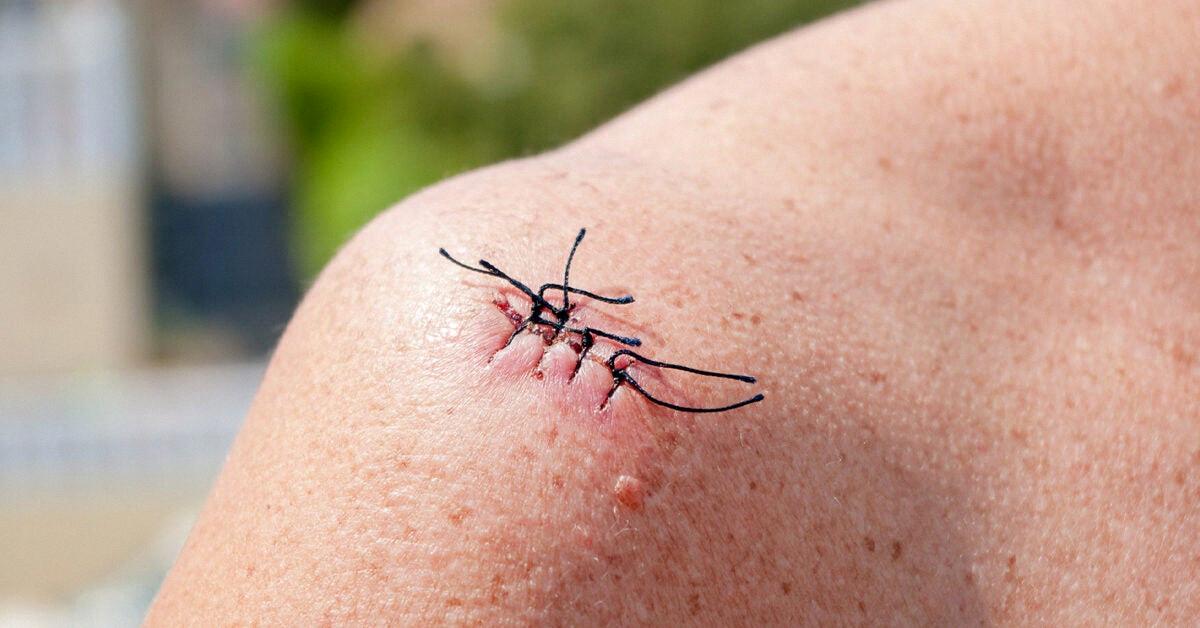If you have recently had a surgery or a wound that required stitches, you may be wondering about the pain associated with removing them. The good news is that removing stitches usually does not hurt. In fact, it is a quick and straightforward process that can be done in a matter of minutes.
When it’s time to remove your stitches, you will be asked to either lie down or sit up, depending on the location of the wound. The doctor or nurse will then use a pair of sterilized scissors to cut each of the knots securing the stitch in place. Once the knot is cut, they will gently pull on the thread until it slides out of your skin.
You may feel a slight tugging sensation as the stitch is being removed, but it should not be painful. If you experience any discomfort, you can let your doctor or nurse know, and they can adjust their technique accordingly.
It is important to note that everyone’s pain tolerance is different, and some people may experience more discomfort than others. If you are particularly sensitive to pain or have anxiety about the procedure, you can ask your doctor or nurse to apply a numbing cream or spray to the area before removing the stitches.
After the stitches are removed, your doctor or nurse will examine the wound to make sure it is healing properly. They may apply a bandage or adhesive strips to help support your wound while it continues to heal. You may also be givn instructions on how to care for the wound and prevent infection.
It is normal to have a scar after the stitches are removed, but the scar should fade over time. To help minimize scarring, it is important to keep the wound clean and moisturized as it heals. You can also talk to your doctor about scar creams or other treatments that may help reduce the appearance of the scar.
Removing stitches usually does not hurt and is a simple and quick procedure. If you experience any discomfort, let your doctor or nurse know, and they can adjust their technique or provide pain relief. With proper care, your wound should heal well, and any scarring should fade over time.
The Sensation of Stitches Removal
Stitch removal usually does not cause any pain, but you may feel a slight tug or pulling sensation as each stitch is removed. The process typically involves using scissors to cut each knot and then gently pulling out the thread. The area aound the stitches may be tender or sensitive, so you may experience some discomfort during the procedure. However, most people describe the sensation as more uncomfortable than painful. If you are nervous or anxious about the procedure, your doctor may offer a local anesthetic to numb the area and help you feel more comfortable. stitch removal is quick and straightforward, and most people find that any slight discomfort is well worth the benefit of having their stitches removed.

Source: twitter.com
Removing Stitches: What to Expect
After the stitches are removed, you can expect some changes in the appearance and feel of the wound. Firstly, you may notice some scarring, which can vary in size, color, and texture depending on the location and depth of the wound, your skin type, and the quality of the healing process. While some scars may fade over time, others may be more visible and permanent. To minimize scarring, you can apply silicone sheets, vitamin E oil, or other scar-reducing products recommended by your doctor.
Secondly, you may experience some mild pain, itching, or sensitivity around the wound area, as the skin and tissues are still healing and adapting to the new environment. You can use over-the-counter pain relievers, such as acetaminophen or ibuprofen, or topical creams, like hydrocortisone or lidocaine, to relieve these symptoms. However, if you notice any signs of infection, such as redness, swelling, pus, or fever, you should contact your doctor immediately.
Thirdly, you may need to protect the wound from further damage or exposure, epecially if it is on a body part that moves or rubs against clothing or surfaces. Your doctor may recommend a bandage, gauze, or dressing to cover the wound and keep it clean and dry. Additionally, you should avoid activities that may strain or pull the wound, such as heavy lifting, stretching, or sports, until it is fully healed.
After stitches are removed, you should expect to give your wound some extra attention and care, both to promote healing and to prevent complications. By following your doctor’s instructions and being patient and diligent, you can help your wound recover smoothly and minimize any long-term effects.
The Effects of Removing Stitches
When stitches are removed, it is normal to experience some slight bleeding. This is becaue the stitches are holding the skin together, and when they are removed, the skin may open up slightly, causing some bleeding. However, this bleeding should be minimal and should stop on its own within a few minutes. If you experience significant bleeding that does not stop, or if you notice fluid leakage or redness around the wound, it is important to contact your healthcare provider, as this may be a sign of infection or other complications. while some bleeding is normal when stitches are removed, it is important to monitor the wound and seek medical attention if any concerning symptoms arise.
The Benefits of Having Stitches Removed
Typically it does feel better once stitches are removed. However, the area may still feel tender for a short period of time afer the stitches are removed. This is because the skin and tissue have been traumatized and need time to heal. The length of time the area may feel tender can vary depending on the individual and the location of the wound. But generally, any discomfort should subside within a few minutes or up to a few hours. It’s important to follow any post-operative care instructions given by your doctor or healthcare provider to promote proper healing and reduce the risk of infection.
Showering After Removing Stitches
You can shower after your stitches have been removed. However, it’s important to avoid soaking the wound completely, especially if it’s stll in the process of healing. Taking a shower instead of a bath is usually recommended. You should also avoid using hot water on the wound, as this can cause it to bleed or become irritated. When cleaning the wound during your shower, avoid using soap directly on the area and gently wash around it. If the wound is in a difficult area to keep dry, your doctor may recommend using a waterproof dressing or covering it with plastic wrap to protect it during your shower. It’s important to follow any specific instructions given by your doctor or healthcare provider to ensure proper healing of the wound.

Source: healthline.com
Leaving Stitches In for Three Weeks: Is It Safe?
It is not recommended to leave stitches in for 3 weeks as they are meant to be removed within 4-14 days following the surgical procedure or injury. Leaving stitches in for an extended period may result in complications such as infections, scarring, and delayed wound healing. It is important to follow the instructions provided by your healthcare provider regarding the care and removal of stitches to ensure proper healing and minimize the risk of complications. If you have any concerns or questions about your stitches, it is recommended to consult with your healthcare provider.
Do I Need A Bandage After Stitches Are Removed?
It is not always necessary to use a bandage after stitches are removed. This will depend on the location of the wound and how well it has healed. If the wound is in an area that is prone to rubbing against clothing or other objects, your doctor may recommend uing a bandage to protect the area. However, if the wound has healed well and is not at risk of reopening, a bandage may not be needed. It is always best to follow the advice of your doctor to ensure proper wound care and healing. They may recommend using a skin tape to provide additional support to the wound after the stitches are removed, which can be removed in 3 to 7 days depending on the healing process.
Conclusion
The process of removing stitches or staples usually does not case any significant pain or discomfort. However, you may feel a slight tug or pulling sensation as each stitch or staple is removed. It is essential to follow the doctor’s instructions carefully and avoid stretching or bumping the wound to prevent complications such as bleeding, swelling, or reopening of the wound. After removing the stitches, you may have a scar, and it is essential to take proper care of it to promote healing and minimize scarring. removing stitches is a routine and safe procedure that is generally well-tolerated by most patients.
